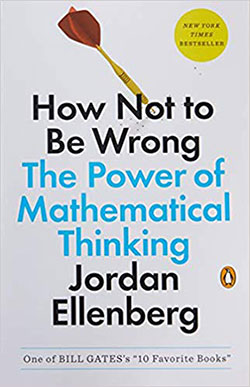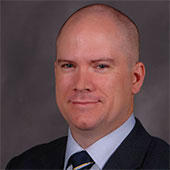As Jordan Ellenberg, the author of How Not to Be Wrong, describes in his book, students tend to become alienated from math at two points in their math journey. The first of these points occurs at the introduction of fractions in primary school. It is challenging for students to understand the difference between natural, or counting, numbers and the more complex constructs that describe proportions and relationships. The second point that tends to lead to mathematical disinterest is the introduction of algebra. Ellenberg hypothesizes that algebra—which is an exercise in reverse engineering a formula—becomes tedious and confusing. Before the introduction of algebra, math is a straightforward, algorithmic exercise. For me, the introduction of algebra was mind numbing. My math teachers told me that math was important in engineering and in building our world, but what I saw was a system that seemed to reject creativity and divergent thought.
I recall, with great clarity, my 7th-grade math teacher stating that his method for solving equations as “the only way” to solve problems. To the middle-school version of myself, it seemed impossible that, given the rigidity of math, it could have applications in engineering, architecture, and other creative ventures.
To my surprise, I actually ended up liking math when I was in business school. I discovered that are many applications for math and its related skills. Even though I have no expectation of becoming a great mathematician, I do appreciate the use of math to support decision-making and forecast future outcomes with greater precision than my gut feelings allow.
Book Specifications
Title: How Not to Be Wrong: The Power of Mathematical Thinking
Author: Jordan Ellenberg
Formats: Paperback, hardcover, and Kindle
Publisher: Penguin Books
Published: May 26, 2015, Reprint edition
Pages: 480
ISBN-10: 0143127535
ISBN-13: 978-0143127536
Numbers Don’t Lie, but Statisticians Politicians Do
A central theme of Ellenberg’s book is that people should embrace mathematical literacy so they cannot be deceived when those in authority present numbers to them—be they the media, politicians, financial advisors, or others. Frequently, people assume that numbers are accurate without checking the math. Even if we do check the arithmetic, it is still possible to get bad information because of our limited perspective on the data.
Ellenberg provides a wonderful example: In June 2011, the U.S. Bureau of Labor Statistics released a report showing anemic job growth of only 18,000 jobs. That was not good news, but the governor of Wisconsin was heartened to see—and likely overjoyed to claim in a news release—that his state accounted for more than 50% of the national jobs growth in the U.S., with 9,500 new jobs. While that could be possible, this information should inspire closer examination because we know that Wisconsin is just one of 50 states and is not among the most populous states. After reviewing the data, It was clear that Minnesota had also added 13,000 jobs during the same period. How could this be? Minnesota’s 13,000 jobs plus Wisconsin’s 9,500 jobs added up to more new jobs than the entire U.S. economy added during that period.
This is the point at which people might realize that the data was cherry-picked to support a predetermined narrative. While it might have been true that these states added jobs, the Wisconsin governor’s claim conveniently omitted the churn—jobs that the state lost during the same period. Not counting negative numbers is a fundamental error in representing information. This example becomes especially important as we consider accountability for investments, employees, and politicians.
 There are certain topics—politics, religion, sex—that are sure to invite disagreement, judgment, and the gnashing of teeth. I want to add math education to that list of uncomfortable discussion topics. Math education—how math is taught and whether it is really applicable to the real world—as been a consistent source of irritation for parents and students across generations.
There are certain topics—politics, religion, sex—that are sure to invite disagreement, judgment, and the gnashing of teeth. I want to add math education to that list of uncomfortable discussion topics. Math education—how math is taught and whether it is really applicable to the real world—as been a consistent source of irritation for parents and students across generations.